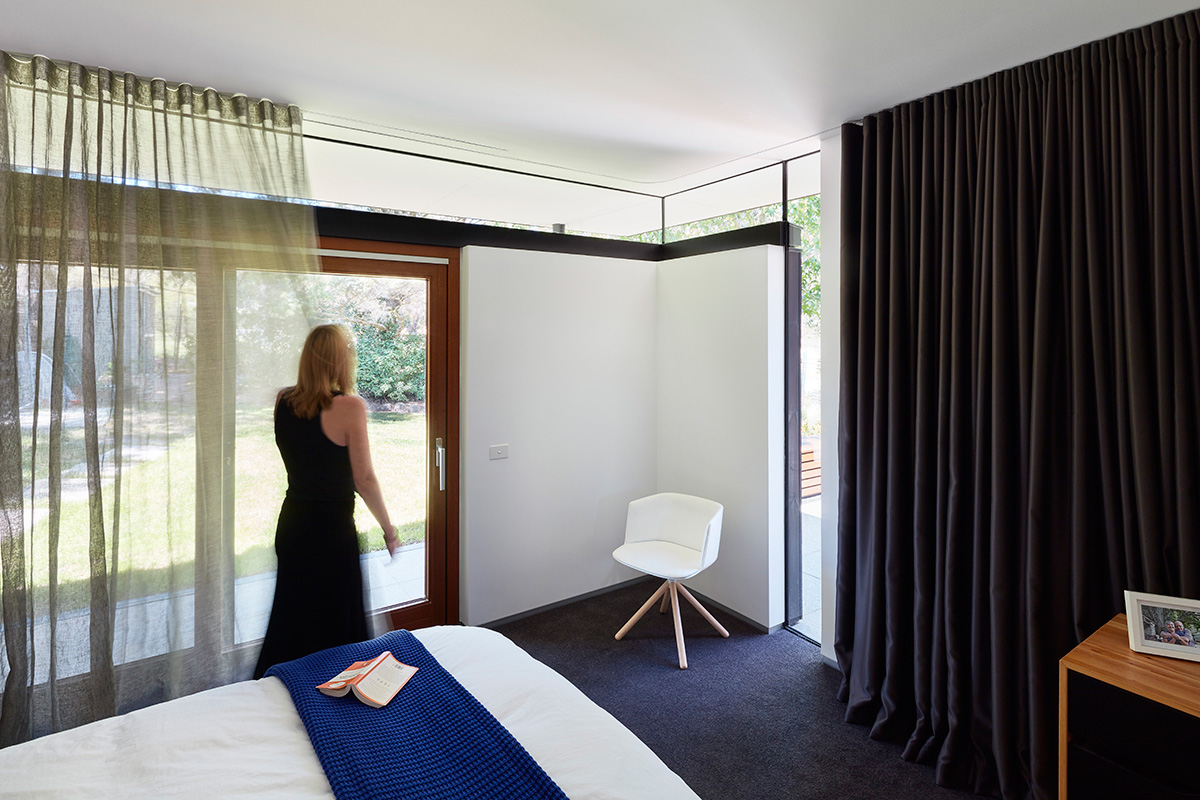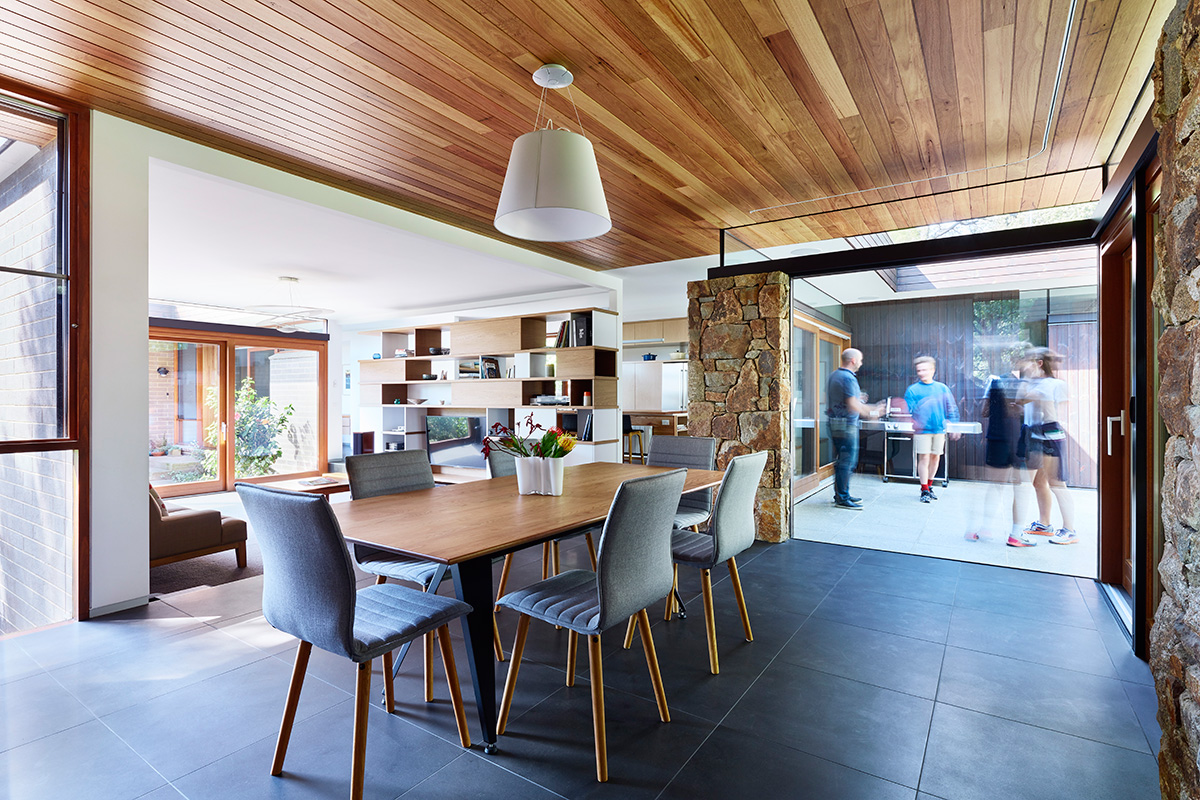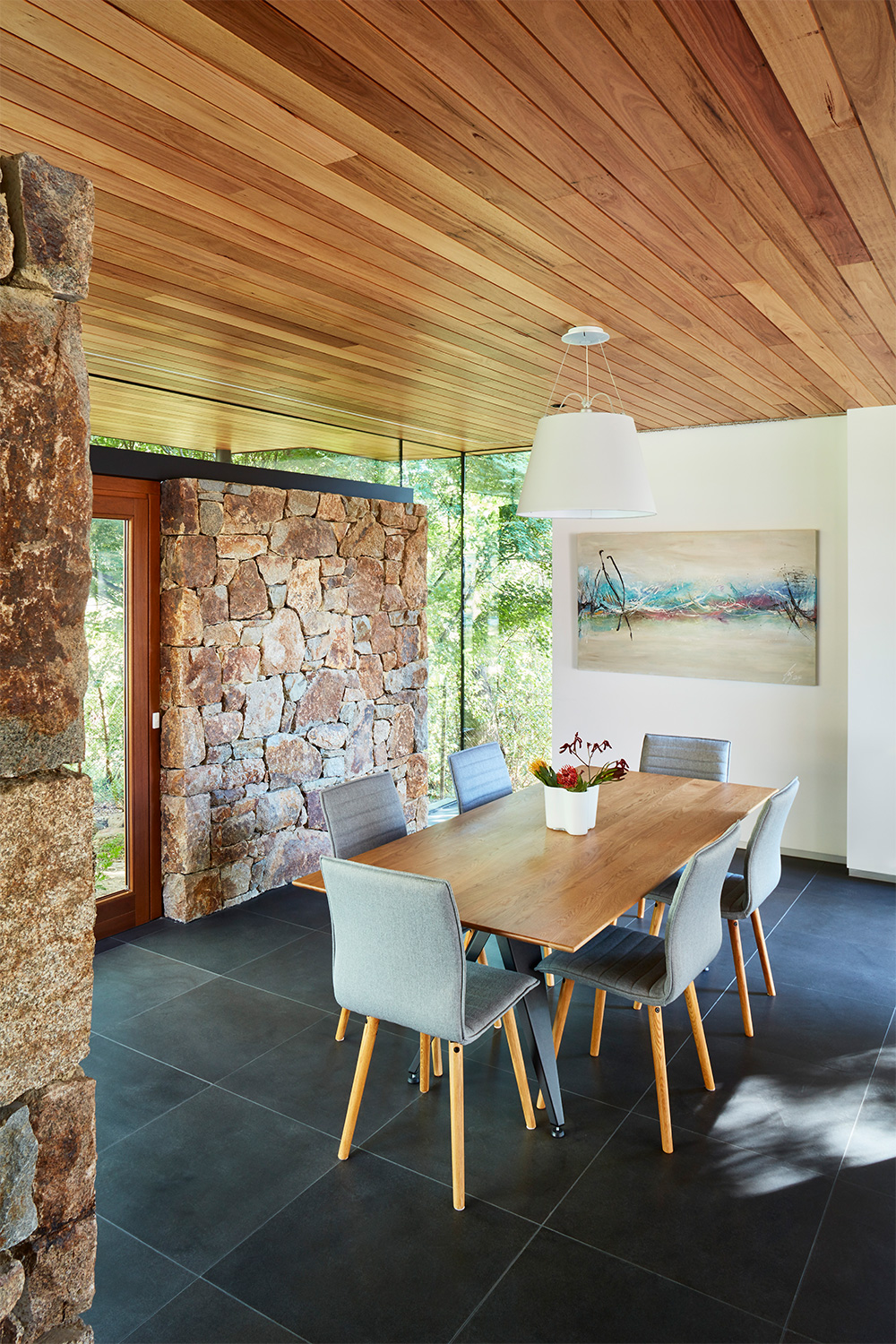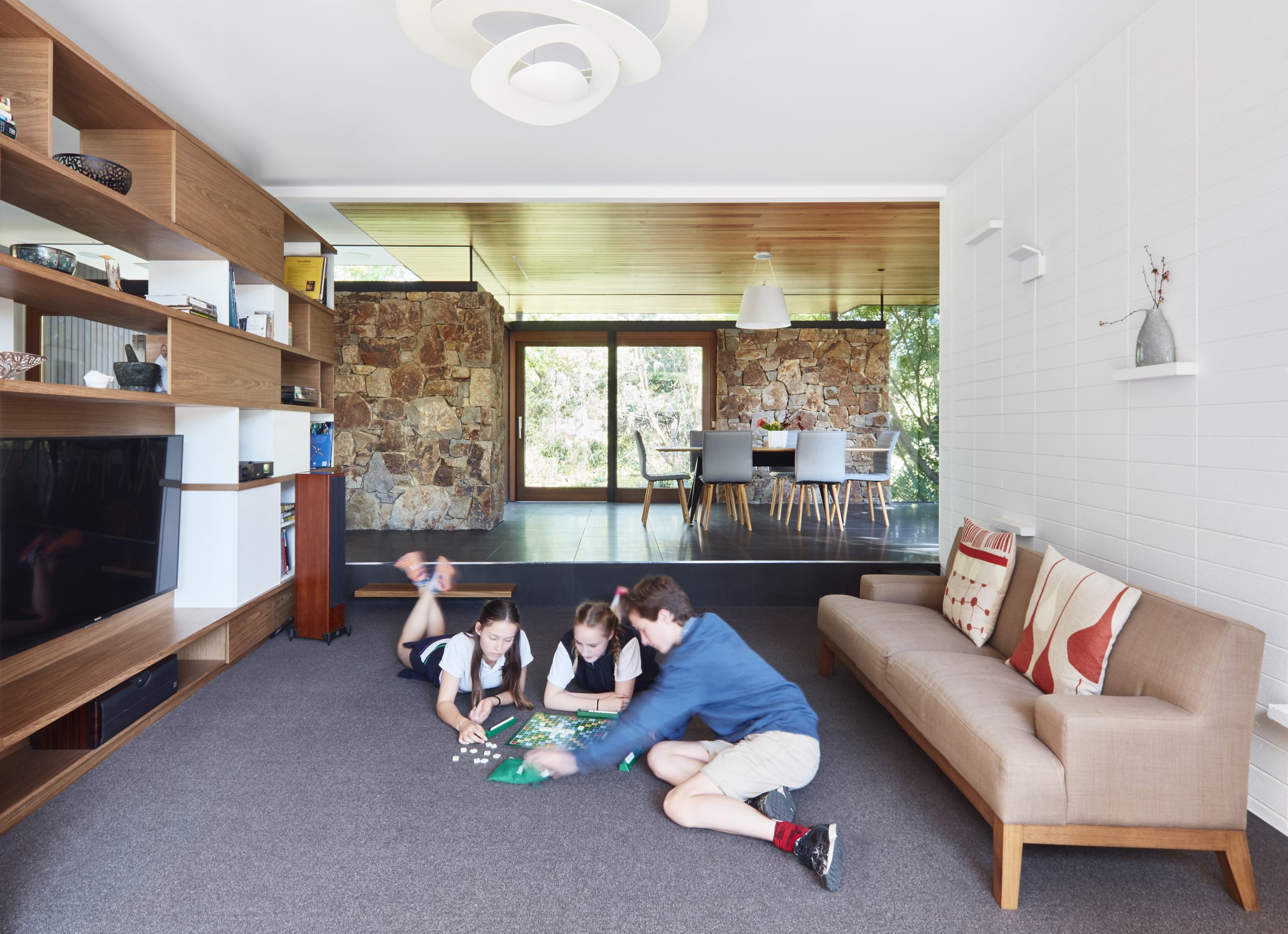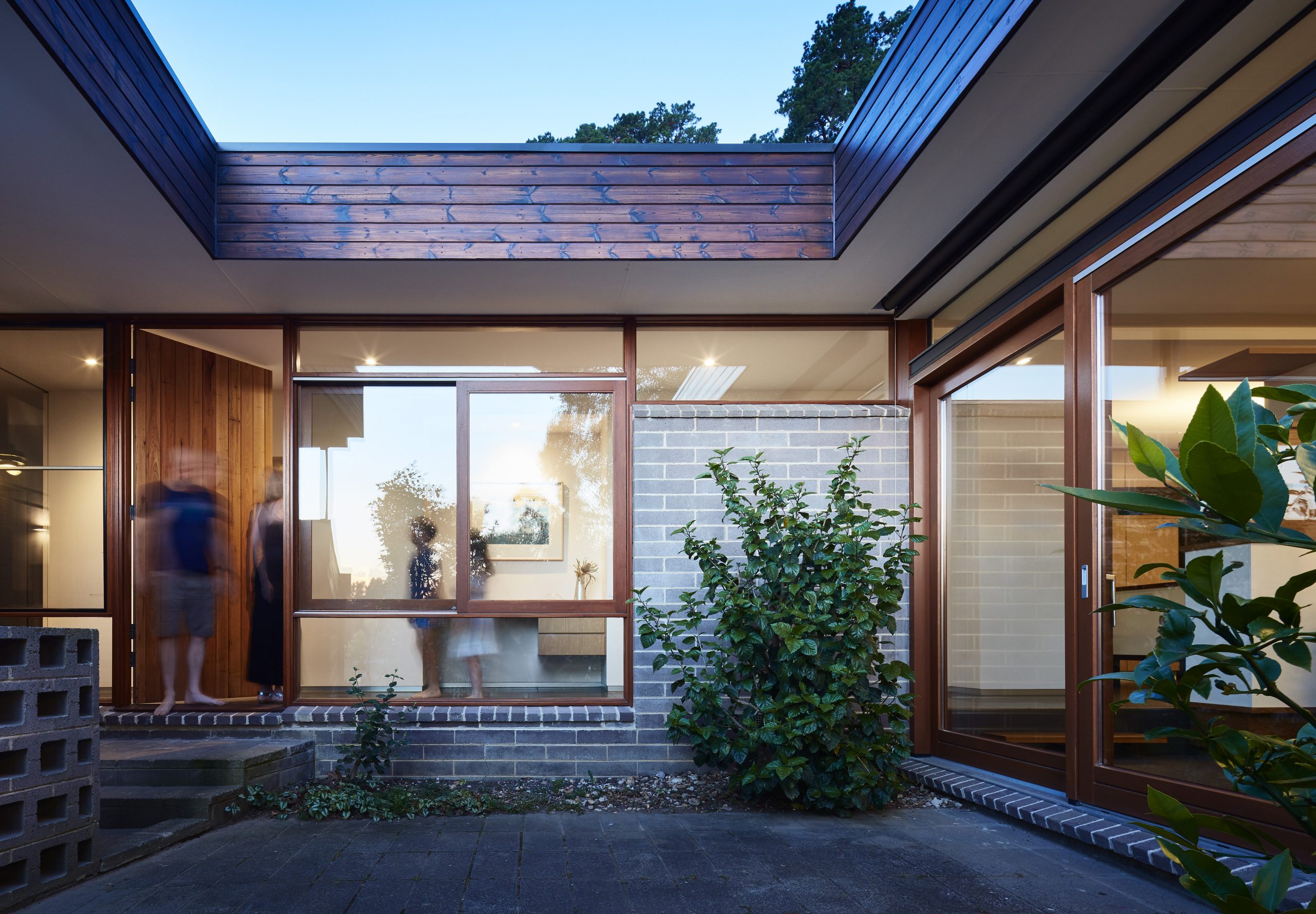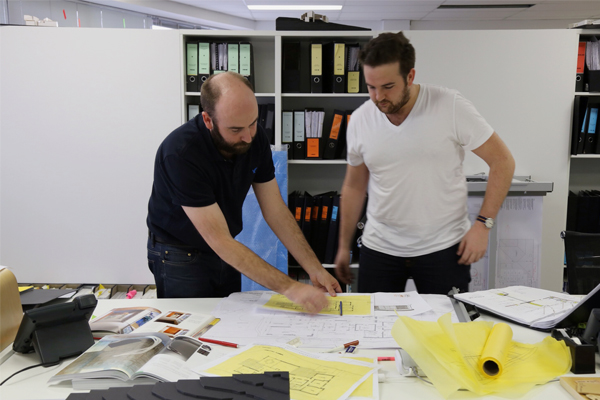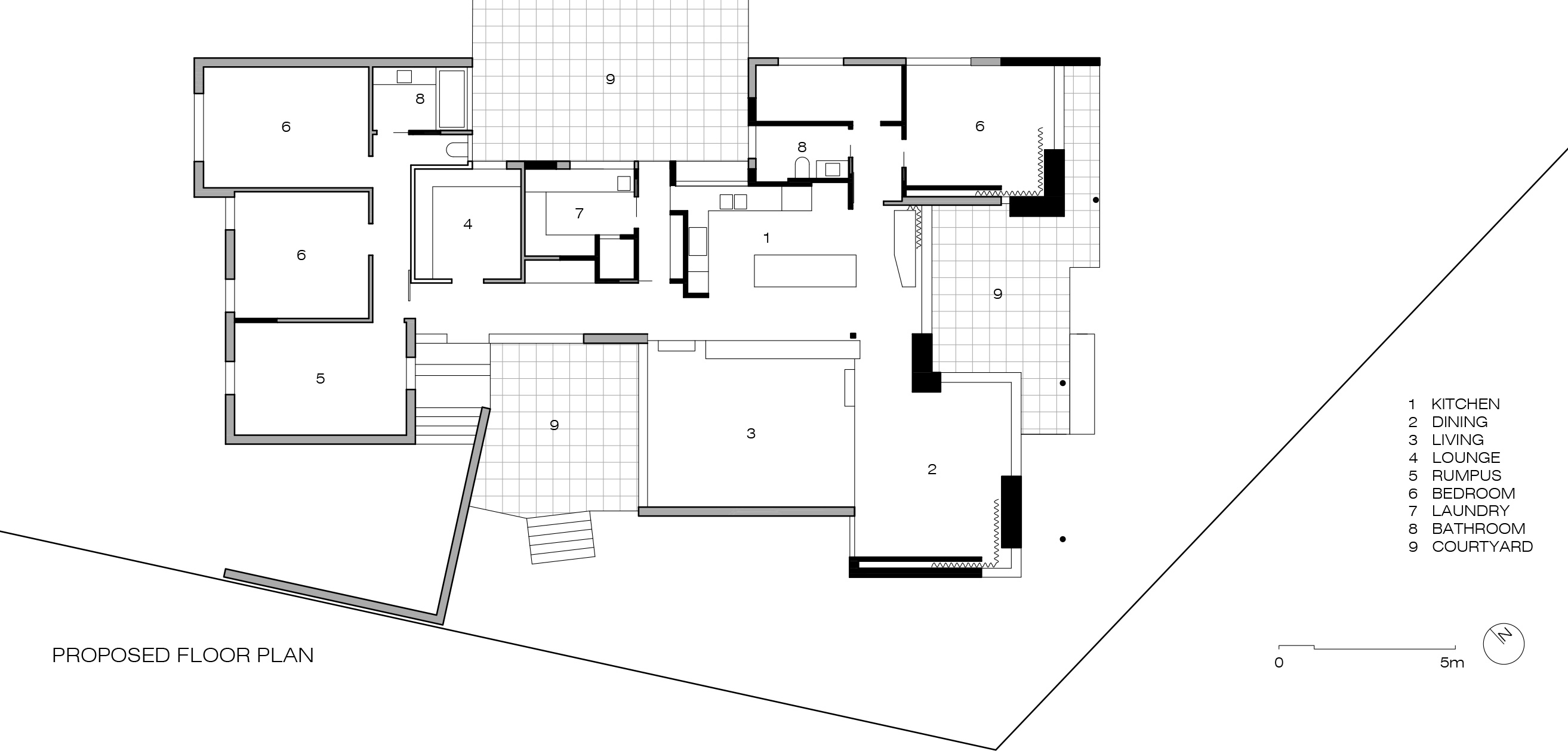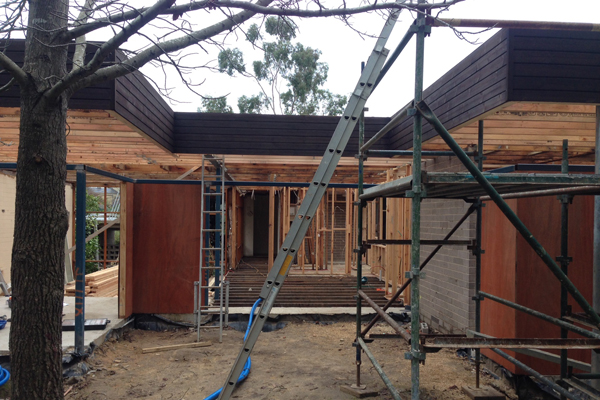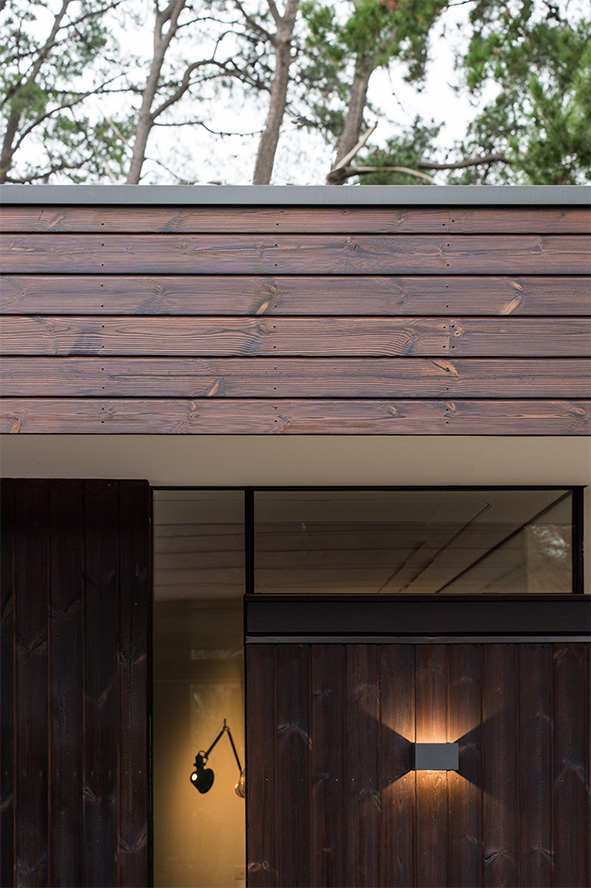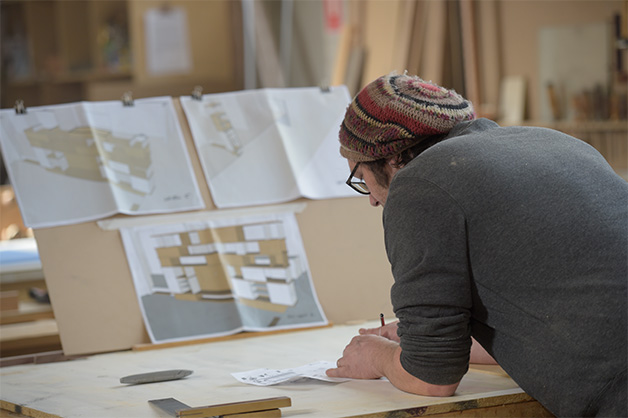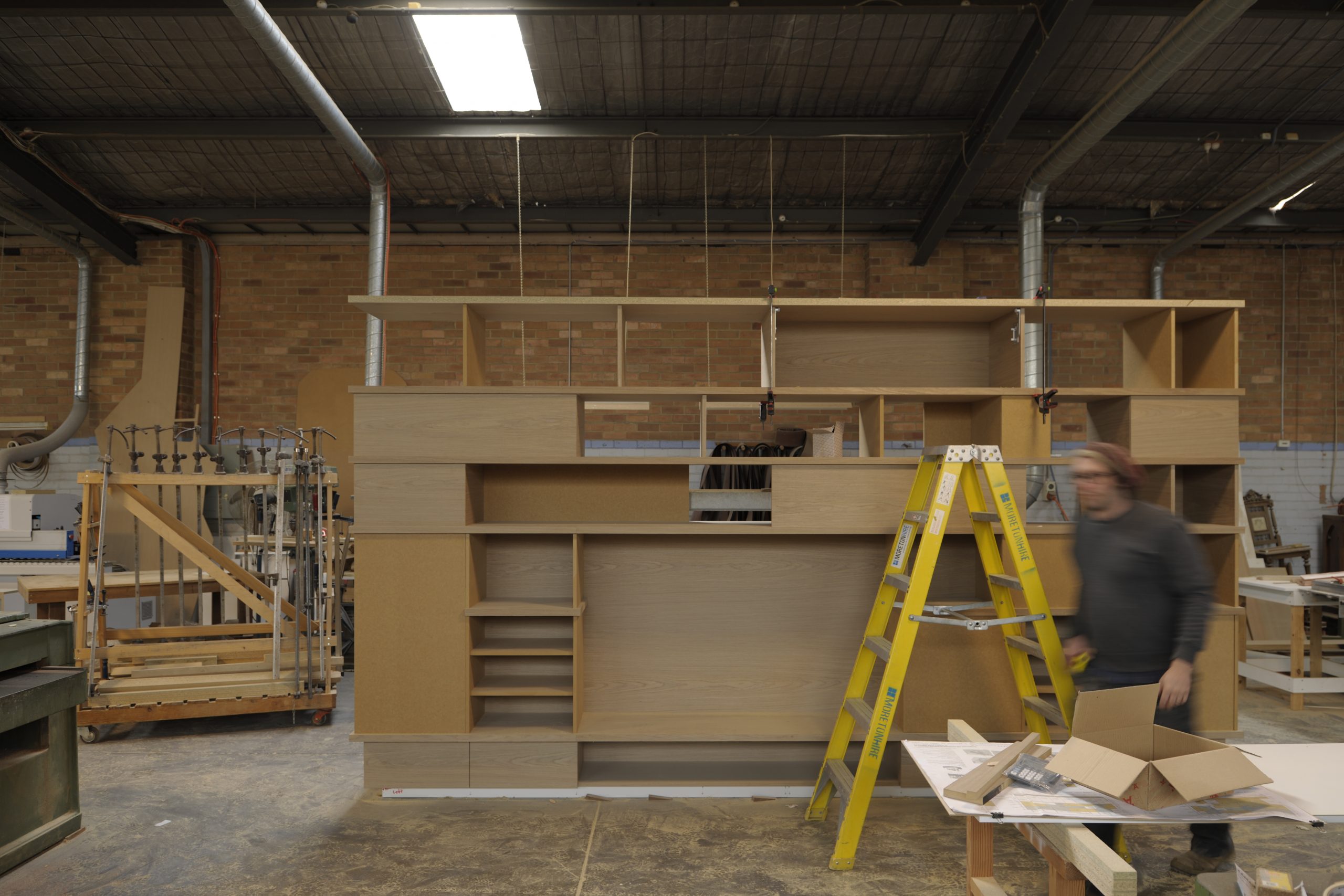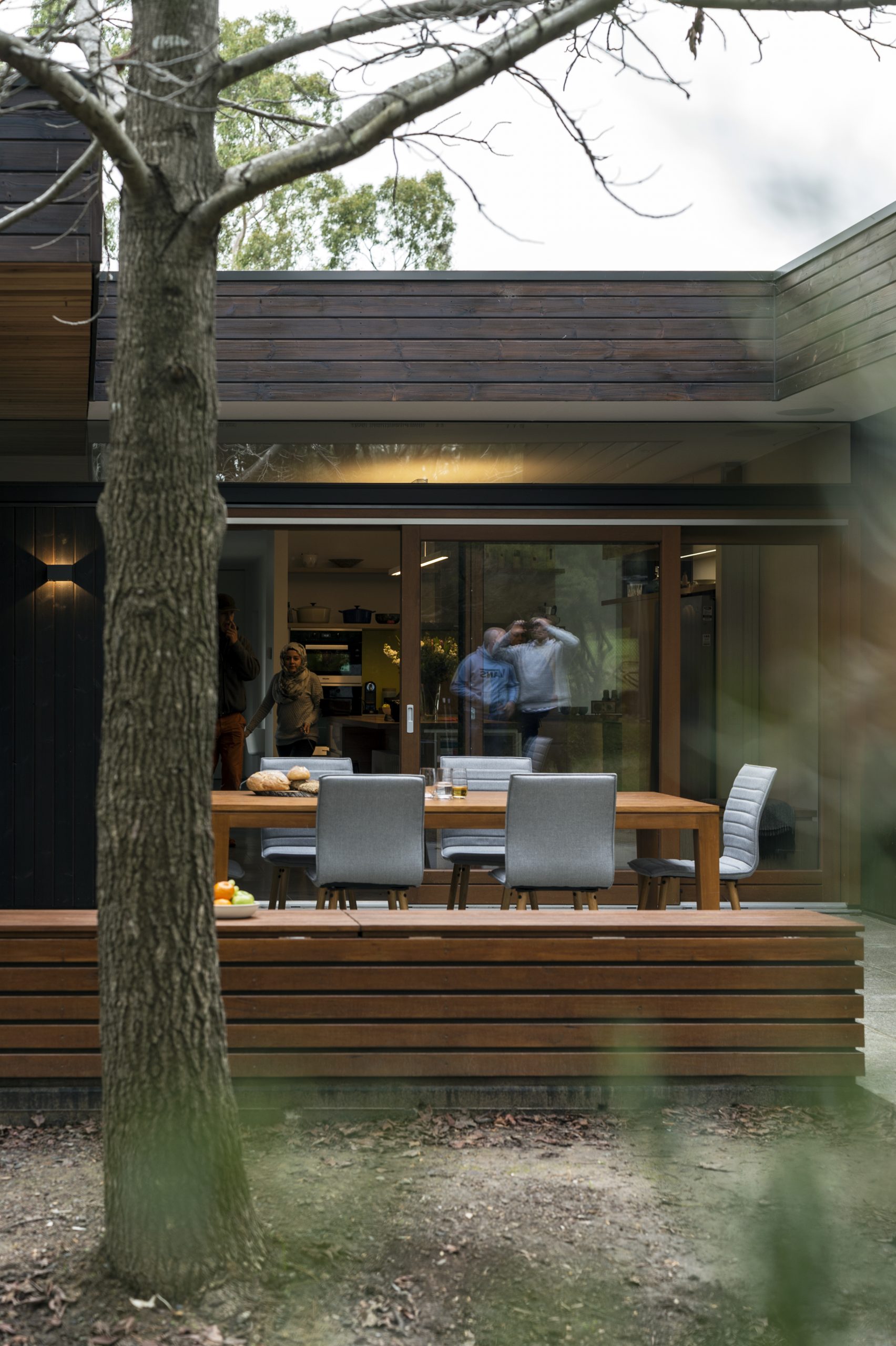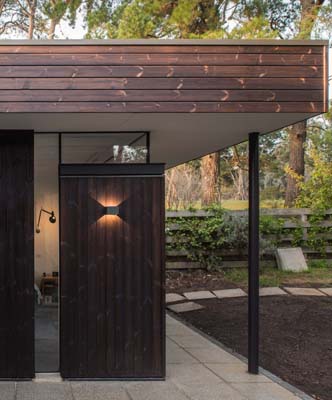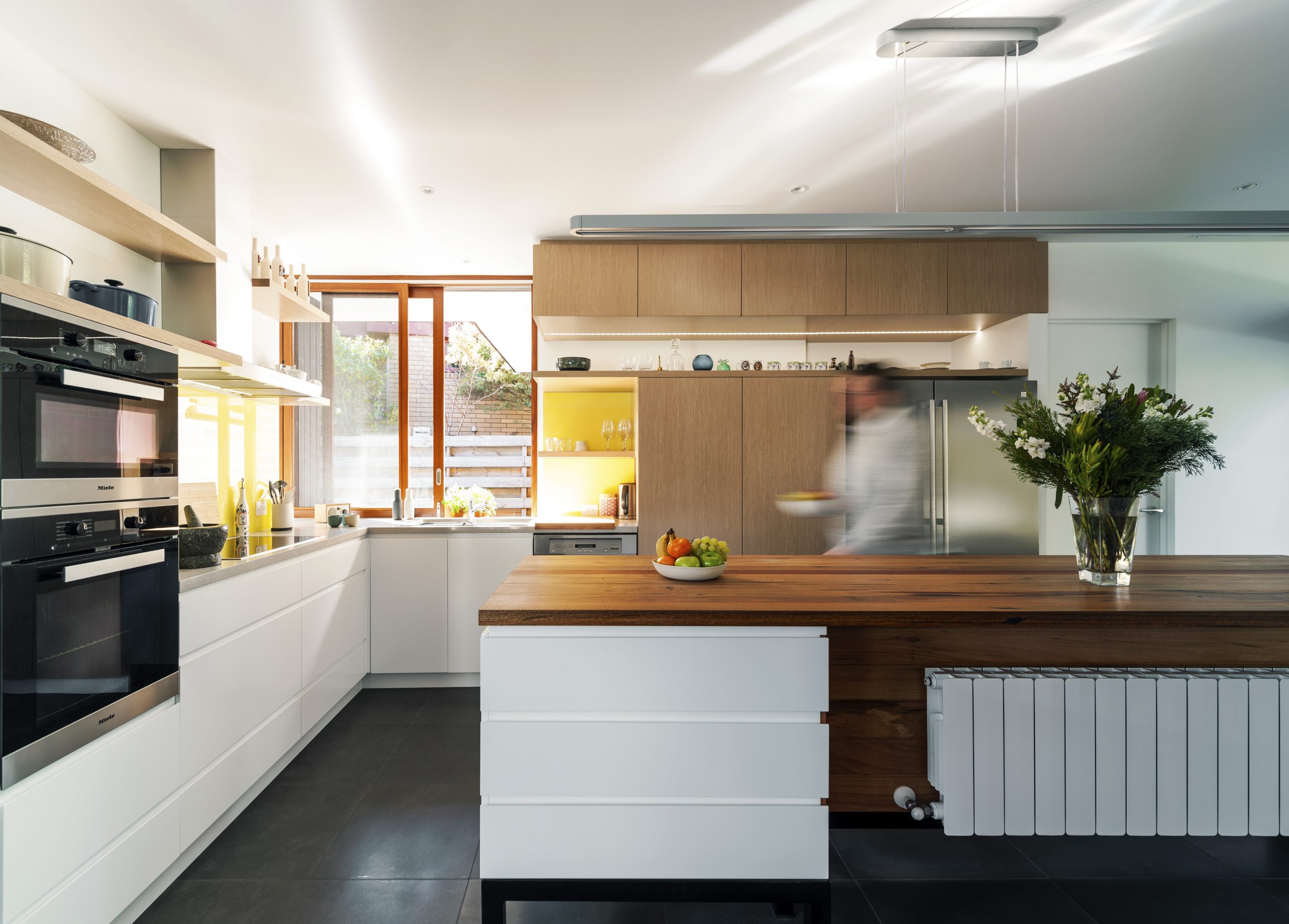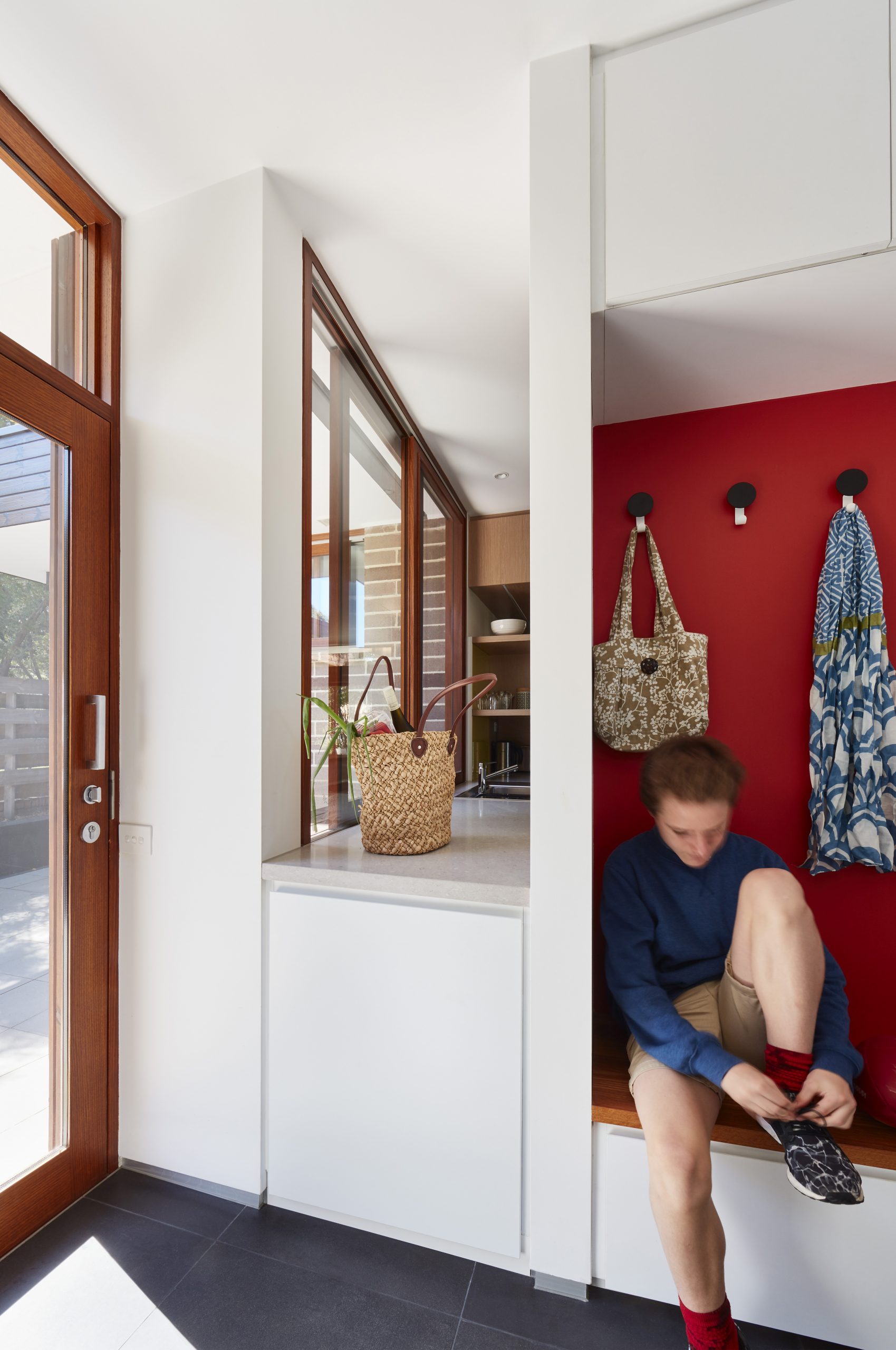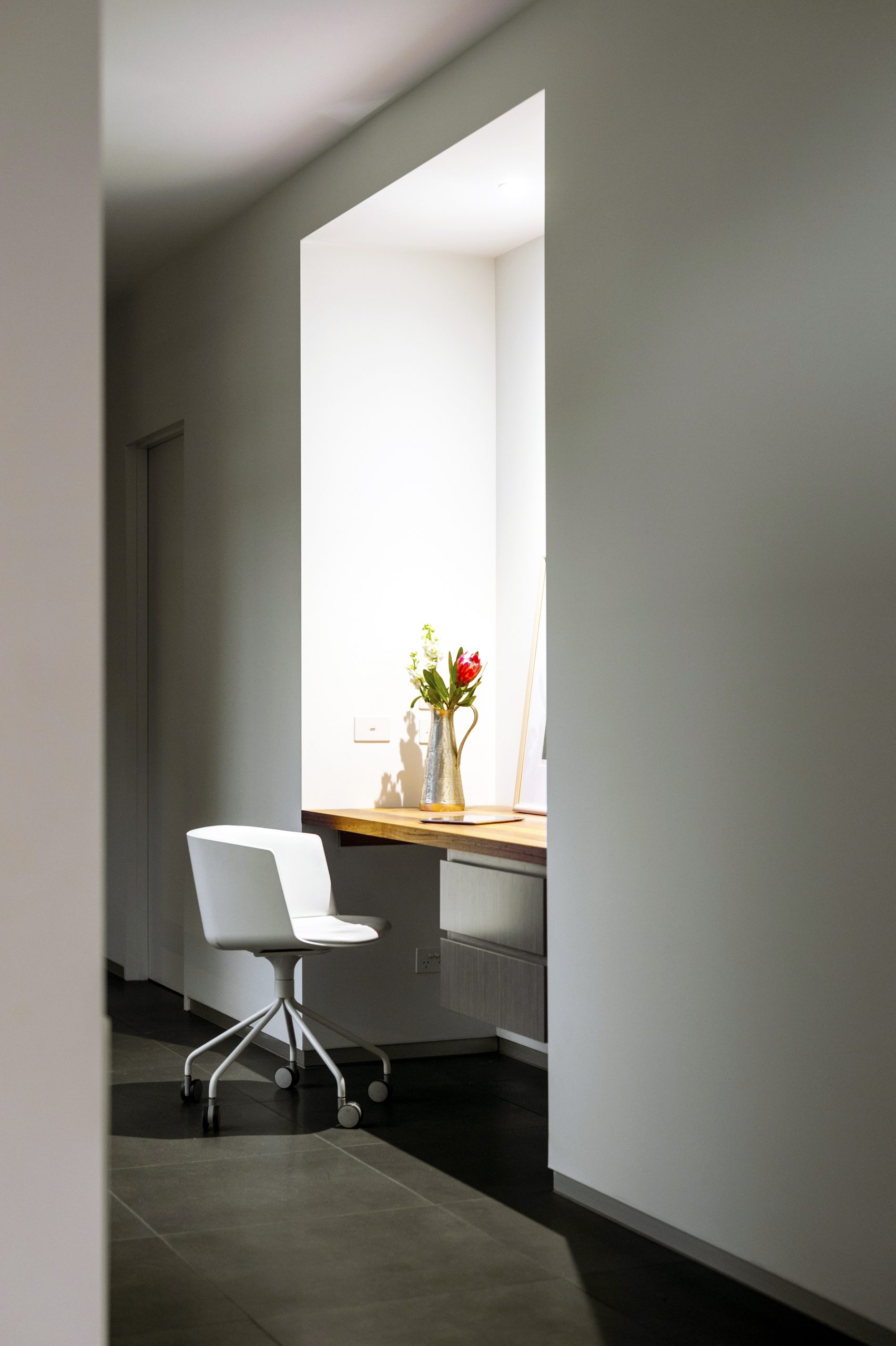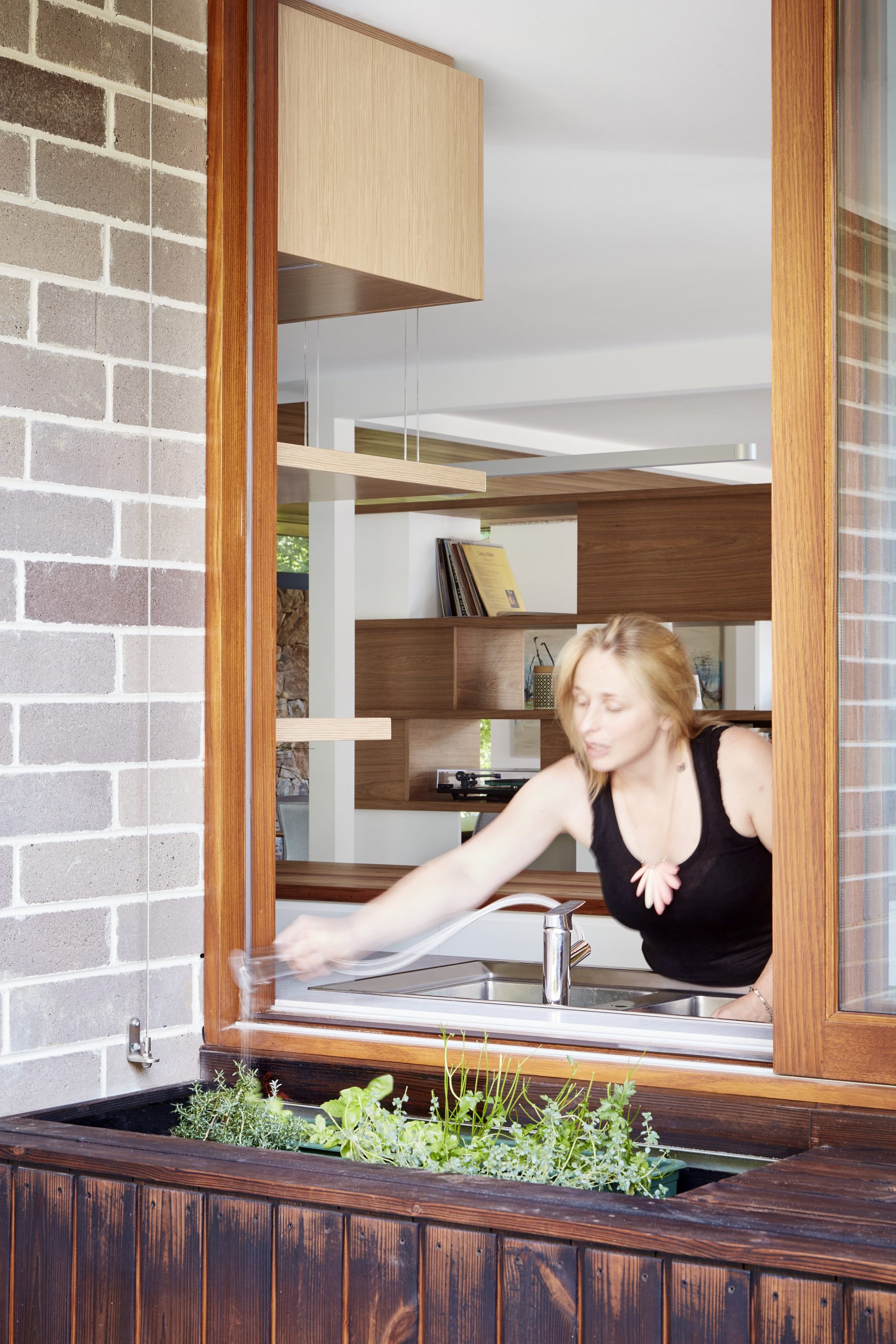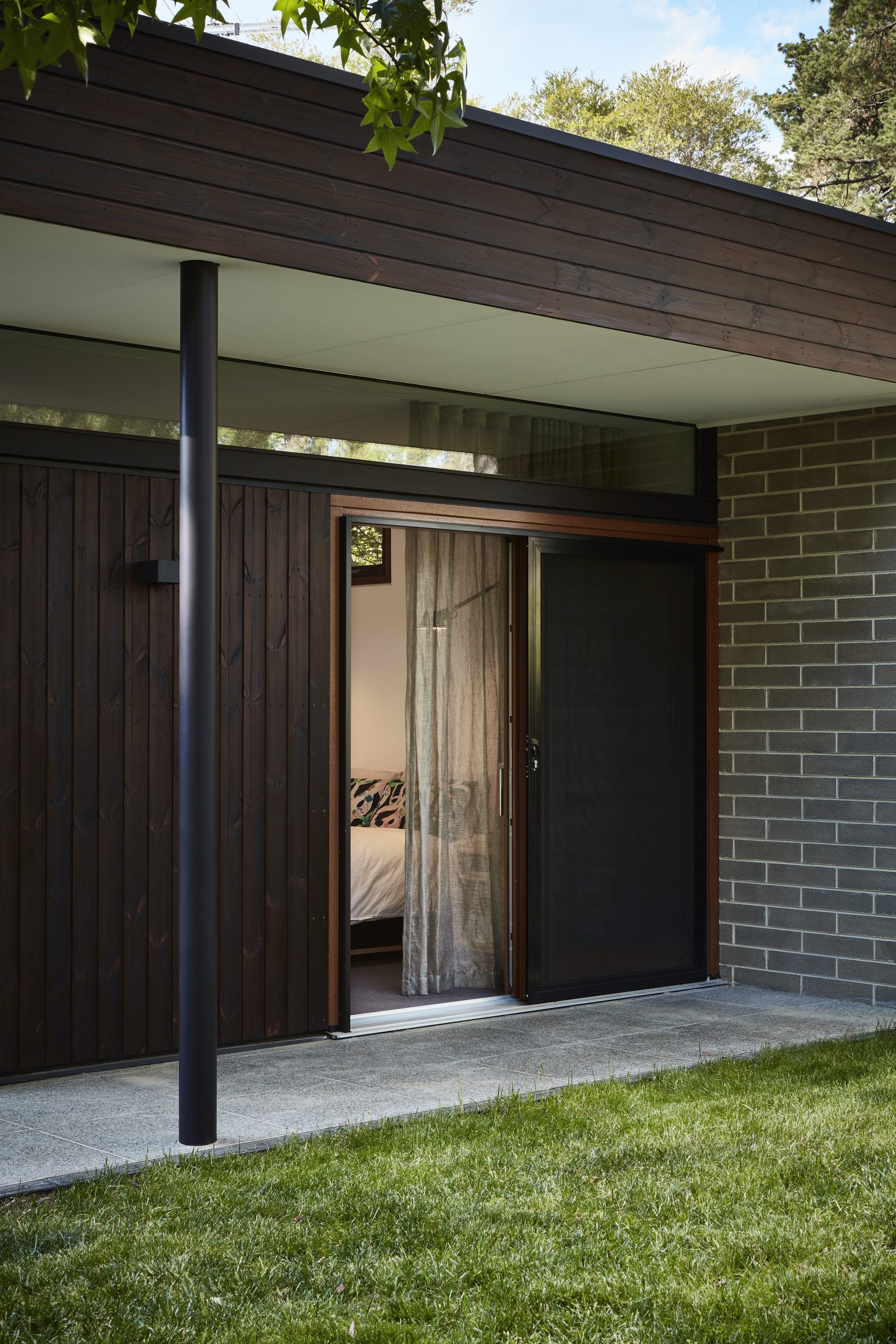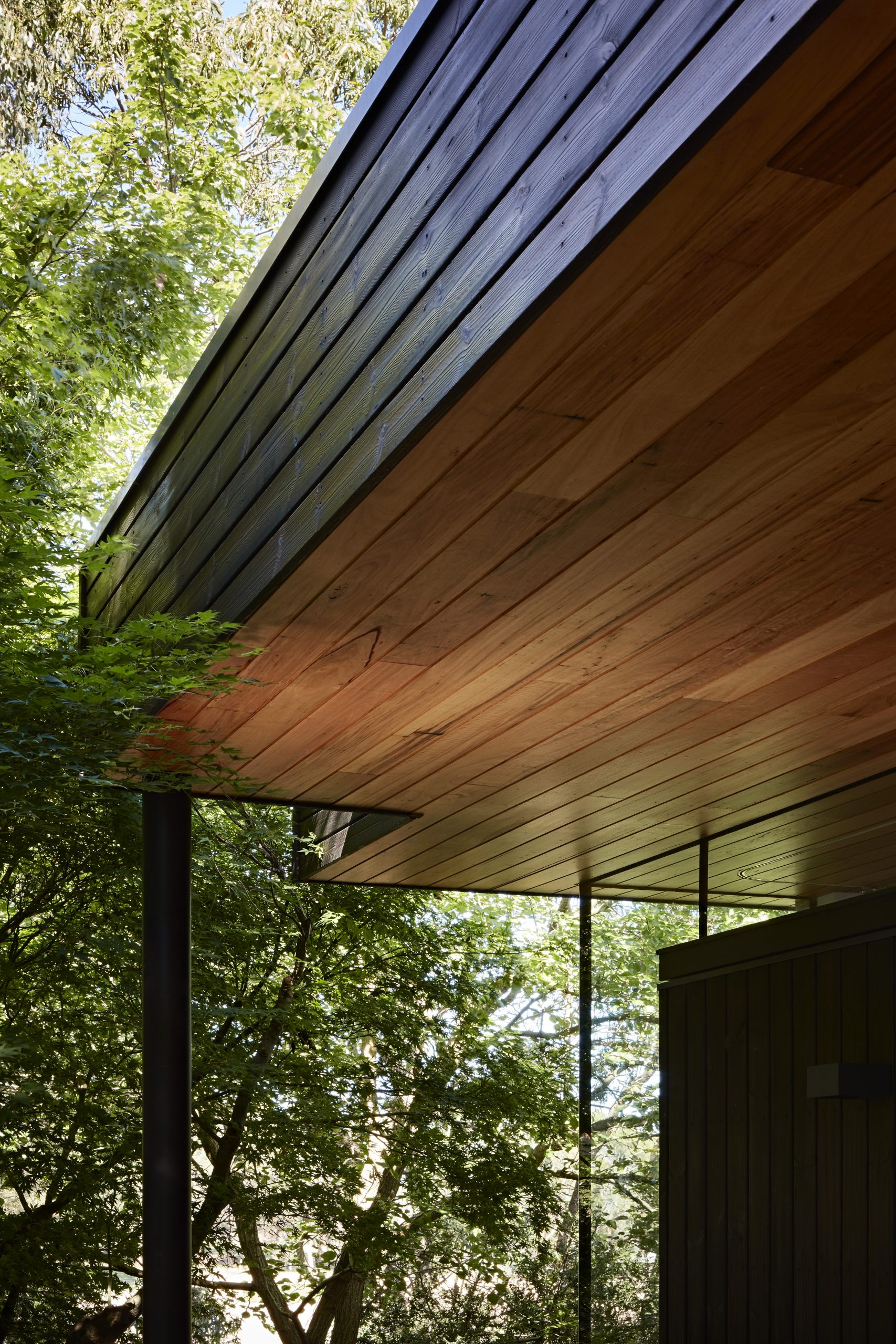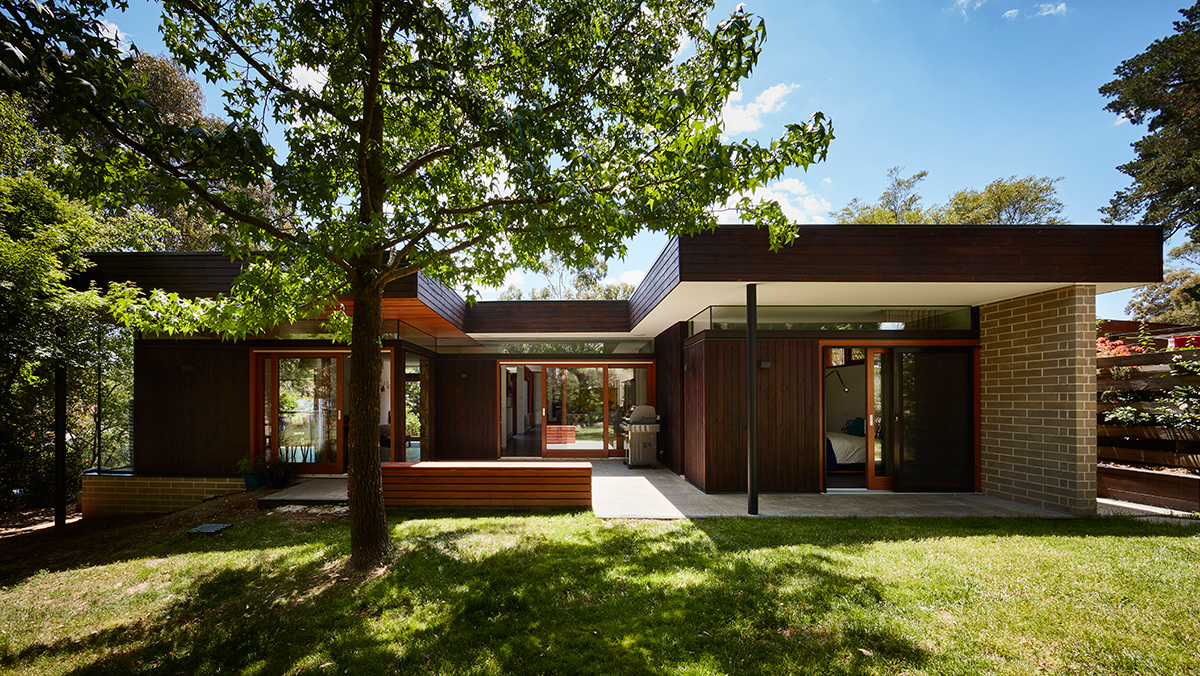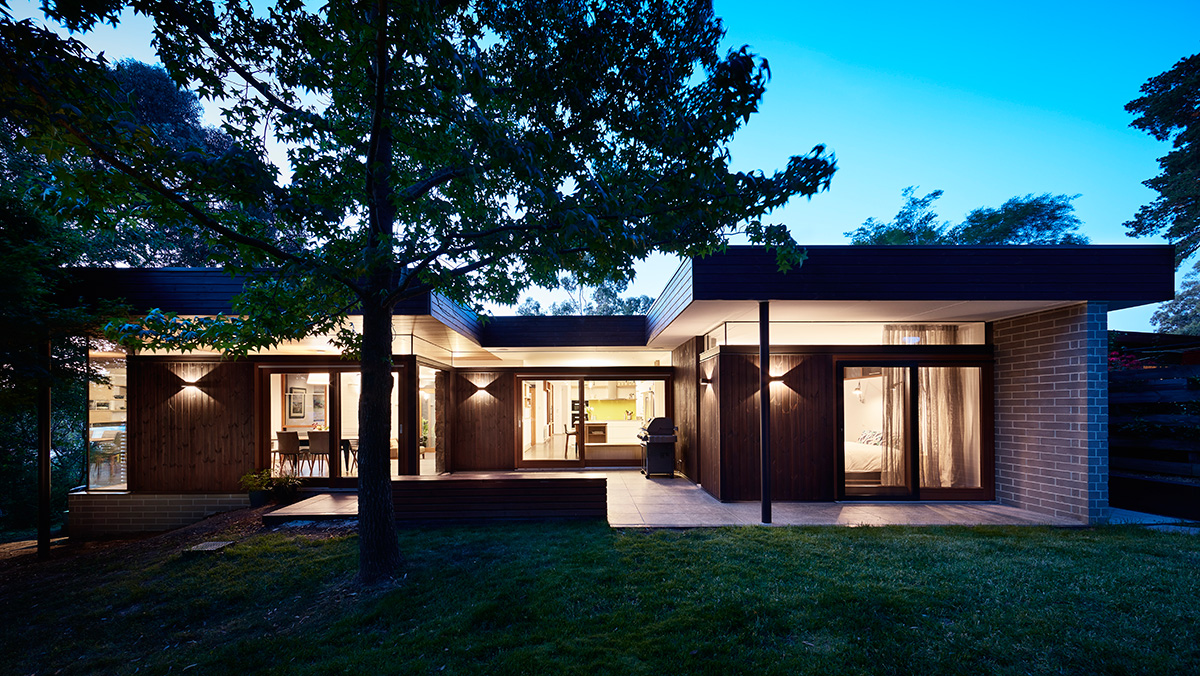While the Doncaster house was in need of a new kitchen and bathrooms, as well as appropriate thermal insulation, the concrete block structure offered the potential to be sympathetically upgraded. It also came with a north-facing rear garden that wasn’t making the most of this orientation.
Steffen Welsch Architects reworked the kitchen and bathrooms, including a new ensuite to the main bedroom. And one of key changes was to create a new dining area adjacent to the sunken lounge that’s typical of this era. Featuring stone walls and new glass windows and doors, this dining area is now where the family gravitates. The room’s bluestone floors also ensure it is used on a daily basis rather than being relegated simply for guests. The lounge was also modified with new timber veneer shelves. And to add texture, there’s a timber- battened ceiling in the dining room.
Other strategic moves included framing the courtyard entrance with generous glazing and butted glass windows to strengthen the connection to the garden. Changes to the kitchen saw the replacement of laminate benches and pokey cupboards with a combination of MDF joinery and open shelves – with recycled timber flooring. Some of the smallest gestures have only become fully appreciated since the owners moved in – an external herb garden/window box just beyond the kitchen sink that allow easy access to herbs for meals. Other changes, such as the breezeblock concrete wall that encloses the carport (a retaining wall), appear to be original but simply evokes the period.
The home now features three courtyards, one forming the entry sequel and framing the front door, a second separating the main bedrooms from the living areas and a third that now embraces the northern garden leading from the kitchen. And with the revival of 1970s architecture, this original house can be enjoyed by the family for decades to come.

